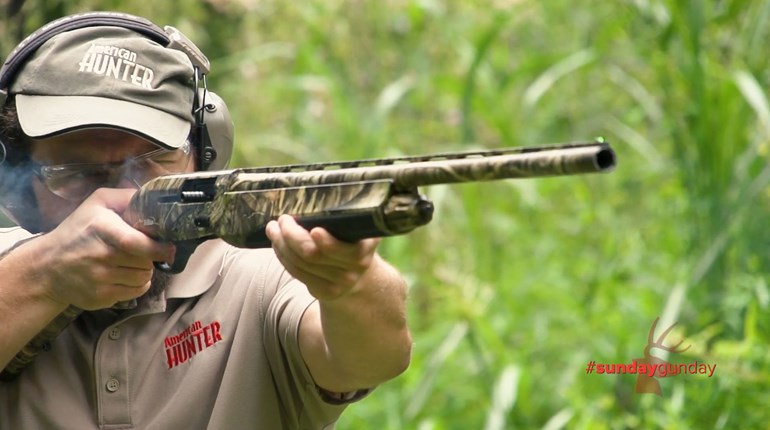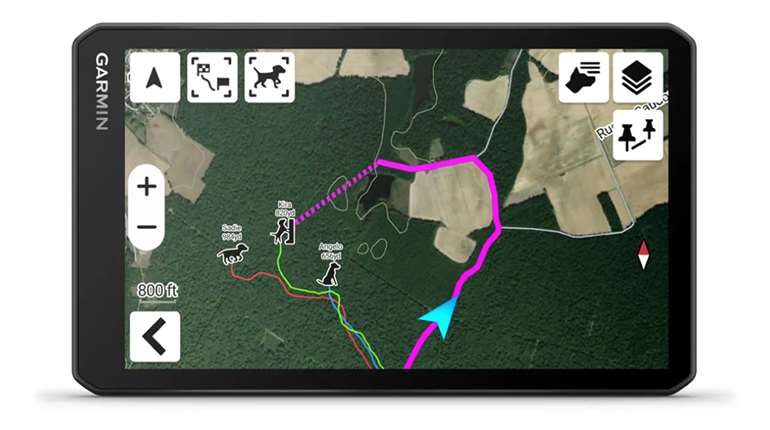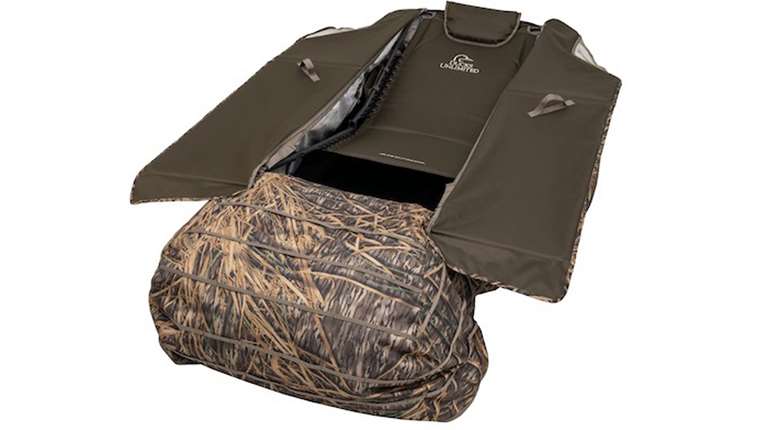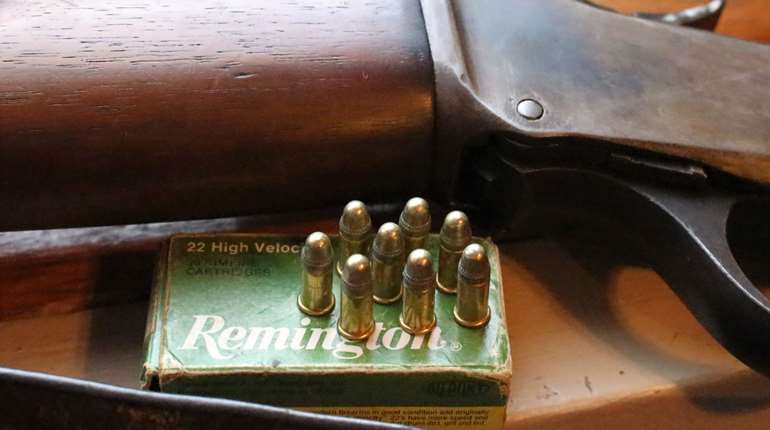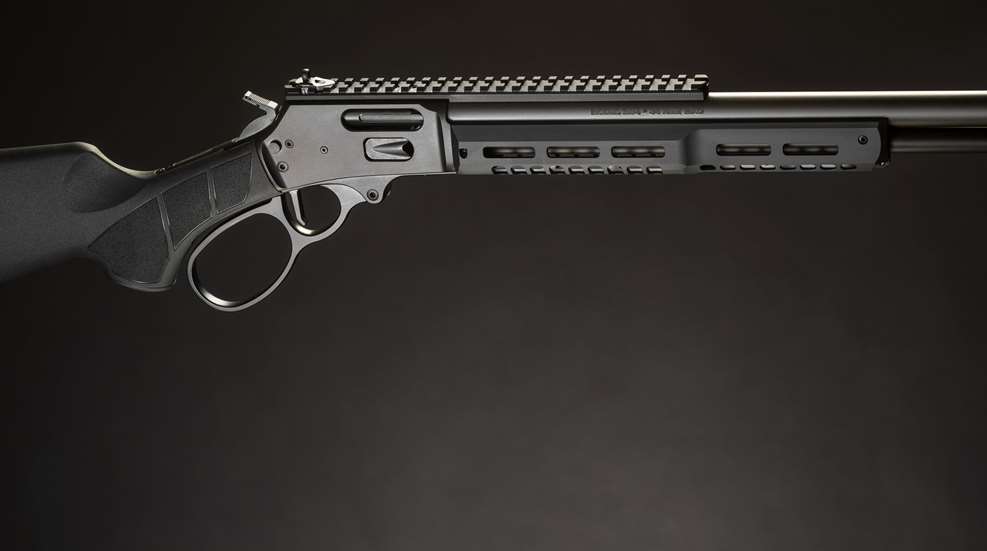
I’m a lever-action guy, always have been. I’m sure it’s equal parts utility, nostalgia and fantasy. My father was a lever-gun guy, and some of the fondest memories from my youth center around big-bore lever guns. I learned to run them early, and grew to appreciate their rugged, workhorse reliability. And, of course, there’s the cowboy draw. What little boy didn’t grow up dreaming of taming the Wild West atop a trusty steed with a wheel gun on his hip and lever gun stowed in the leather scabbard? Heck, I can’t help but to still feel that way every time I enter the woods with a lever gun. Whether I’m chasing whitetail or bank robbers, with a lever gun in my hands I’ll be able to handle either one. If spurs didn’t make so much noise, there’d likely be treestand tales told on the VA hunting forums of the cowboy spotted stalking through the woods, complete with boots, chaps, hat, bandana and lever gun, his spurs spinning off fallen logs. Okay, so maybe fantasy owns a larger portion of my lever-gun love.

Well, a modern cowboy ought to have a modern lever-action rifle. That’s one reason why I was so excited to get my hands on the latest lever gun from Smith and Wesson, the 1854 Stealth Hunter. Its .44 Mag. chambering was another reason, as despite my fondness for the action and cartridge, I’ll admit I hadn’t hunted with a .44 Mag. until I took the Stealth Hunter to Texas on a fallow-deer hunt last November. The experience was a game changer, as they say, and I’ve since taken three whitetails with various .44 Mag. lever guns, and plan to take a whole lot more.
An evolution of the 1854 lever-action rifle introduced by Smith and Wesson last year, the 1854 Stealth Hunter is, in my humble opinion, the best of the S&W bunch. It’s everything a lever-gun ought to be—light, fast and nimble—and it sports the common upgrades that turn these “old” guns into modern-day range rulers right out of the box.
At the heart of any lever gun lies its lever action, and the 1854’s is a thing of butter-smooth beauty. Designed much like the Marlin 1895 (which means it’s easy to take down and clean), the forged stainless steel receiver features side ejection and a side loading gate. It’s finished in a black Armornite that’ll protect it from weather and rust. The 1854 sports a large-loop lever, which, although it looks good, I’m not a huge fan of, personally. My hands aren’t huge, and the extra space provided in the lever means I’ve got to clear air before the back of my hand meets steel and allows me to work the action. With gloves it’s not a huge deal, but my bare hand sure feels it after a day on the range. Admittedly, the larger loop does allow for thick, heavy gloves in winter, but unless they have exposed fingers, I personally prefer not to shoot with a gloved hand, especially not a thick glove that robs the feeling from my trigger finger. One aspect I do appreciate of the 1854’s fire-control system is the flat-faced trigger. It’s flat and wide, which lends to a straight pull more so than a curved trigger. The trigger on my test model broke right around 5.2 pounds pull weight, which is about what I’d expect from a lever gun.

Like most modern lever actions, the 1854 features a cross-bolt safety. It’s something I’ve always despised in a lever gun, but the 1854 does have a half-cock feature, allowing you to keep a round in the chamber and safely carry in the field or hold the firearm in your treestand without worry. Adding a cross-bolt doesn’t change that, and it’s obviously a smart move to use it, just remember to take it off before you drop the hammer on a big buck or hog. The metallic “tang” of your hammer hitting steel instead of the report of your shot will not only surprise you, but it’s likely to send your quarry running for the hills. Trust me—been there, done that—and it’s led me to utilize the half-cock method instead.
Like a lot of the “black” lever-action rifles of today, the 1854 Stealth Hunter wears a black polymer rear stock. Rather basic, it sports a straight comb, a good recoil pad and some fairly aggressive “stippling” on the grip for a sure hold. The fore-end, however, is made of aluminum and sports a total of 15 M-LOK slots (five on each side and five on the bottom) for the addition of a flashlight, IR light or any other number or combination of add-ons that you can think of. It’s perhaps overkill, but it makes for a tactical look and provides the ability to turn this gun into a true nighttime hog-killing machine.
One thing I will note, you’ll need to remove the magazine tube in order to gain the clearance needed to take advantage of the M-LOK slots in the fore-end. Though it’s removed much the same, the mag tube does not sport a removeable plug for front-end loading, rather, it’s a one-piece tube. Along with providing clearance for the M-LOK slots, the S&W website claims this removable tube allows for easy unloading, but I found this feature a bit unnecessary if not impractical as the tube is spring-loaded and dumps its rounds into the fore-end upon removal, which you’ll then need to shake out of the empty fore-end as they clang about the aluminum and hang up on the M-LOK slots. I prefer to unload the mag tube the old-fashioned way, by racking the rounds through the chamber. At any rate, the removable tube is what allows you to access and utilize the M-LOK slots easier, so it’s a welcome and necessary feature of the firearm’s design.

The Stealth Hunter wears a short, 16.3-inch barrel, threaded for a suppressor. Awesome. Although the .44 Mag. doesn’t kick too much in a lever-action rifle to begin with, adding a suppressor turns this fun rifle into a pure joy to shoot. I utilized a Banish 46-V2 suppressor in my testing, and though it changed the balance slightly, accuracy wasn’t affected and the reduction in recoil and report it provided convinced me that it’ll stay there for all my Stealth Hunter shooting. As sights go, the Stealth Hunter gives you lots of options. It comes standard with a 10.5-inch Picatinny rail, complete with a integrated adjustable and removable XS ghost ring rear sight to work in tandem with the HiViz H3 fiber-optic front sight. These “irons” provide a sight picture that is usable in low-light scenarios. If you choose to add an optic, you’ve got plenty of rail space to suit whatever setup you desire, be it an LVPO, red-dot, forward-mounted scout scope, thermal or night vision, or an LVPO with a thermal clip-on—now we’re talking.
All things considered, the 1854 Stealth Hunter has a lot going for it. I think it’s the ideal size for a .44 Mag. lever action, and its threaded barrel, multiple M-LOK slots and extended Picatinny rail make it an adaptable firearm for hogs, whitetail and ranch protection. It’s fun to shoot, sports a fast and smooth action, is light on recoil and is plenty accurate with ammo it likes. If you’ve been waiting to get into the lever-gun game, or are looking to add a pistol caliber to your collection—especially one that can share a cartridge with your hip-holstered smoke wagon—the 1854 Stealth Hunter is a viable option.

S&W 1854 Stealth Hunter
- smith-wesson.com
- Type: lever-action, centerfire rifle
- Caliber: .357 Mag., .44 Mag. (tested), .45 Colt
- Magazine: tubular; 8-rnd. capacity
- Barrel: 16.3"; medium contour; button rifled; 1:20" RH twist; 11/16x24 TPI threaded muzzle w/cap
- Trigger: single stage; 5.2 lbs. pull weight
- Sights: XS ghost ring rear, HiViz H3 fiber optic front; 10.5" Picatinny rail
- Safety: cross-bolt
- Stock: straight comb; polymer; black; 13.25" LOP; aluminum fore-end w/M-LOK
- Metal Finish: black Armornite
- Overall Length: 33.4"
- Weight: 6.43 lbs.
- Accessories: hammer spur extension
- MSRP: $1,399












